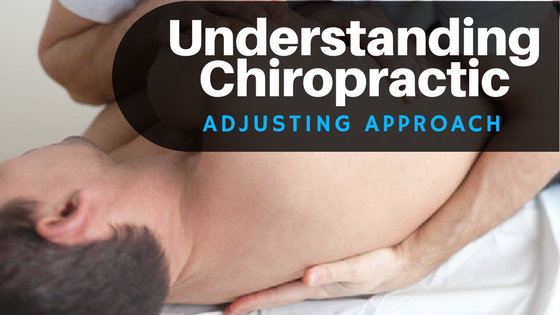Understanding Chiropractic: Adjusting Approaches
Defining what chiropractic is to the public is just as confusing to the profession itself. Throughout graduate school, chiropractic is taught as a "Science, Philosophy, and Art." Depending on the personality of the future chiropractor, they may lean toward one of these pillars more so than the others. For both Rachel and me, we found our salvation through a group called Motion Palpation Institute (MPI). It was the first group that clicked with us; MPI laid the foundation upon which we stand. To understand the turmoil in the profession, it helps to understand the "camps", in regard to the adjustment. In chiropractic, you will typically find two camps: a static model and a movement-based model.
Static-Based Chiropractic Adjusting Model
The static model is considered the traditional approach. Depending on what part of the country you live, the static model will vary as well. This is due largely to the type of schools within that geographic region. Some chiropractic schools heavily focus on philosophy and adjusting with little to no focus on rehab or soft tissue therapies. Often times, the philosophy dates back to the late 1800's and early 1900's when chiropractic became recognized as a profession. In some regional areas, a static approach will incorporate passive modalities such as roller beds, traction tables, e-stim, hot packs, and/or ultrasound. The static model will also often focus on how spinal subluxations play a role in visceral (organ) dysfunction. You will quickly know if you are seeing a traditional chiropractor by the artwork on the wall. If you see a spine poster with nerves to their associated organs, you are seeing a traditional or static-based chiropractor. The static model will typically focus on palpating the spine while laying face down and state things such as "your spine is out of alignment", or "your bone is out of place." This model is based mainly on anatomy, not function or movement of that anatomy.
Movement-Based Chiropractic Adjusting Model
The movement-based model integrates palpating the joints throughout planes of motion and finding where there is limited or excessive motion. We, as human beings, must move from Point A to Point B as a necessity to survive. For both Rachel and me, it only makes sense to palpate the joints and then create lacking motion in the joints, when appropriate. However, this approach is not well understood or differentiated from the typical chiropractic approach; it is largely new, in regard to the age of the profession. The main difference in adjusting philosophy, between these two camps, comes down to how the body and joint(s) are assessed and adjusted. Movement-based chiropractors focus on targeting transitional areas or the key links within the spine that are causing local, regional, and global body pain and dysfunction. It is not about providing the "flying seven" i.e. adjusting the same thing on both sides, for every patient, who walks through the door. Movement-based chiropractors will typically have posters and artwork within the office displaying musculature and movement diagrams. A movement-based chiropractic clinic or doctor will state things such as "you have decreased or excessive motion." This model looks more into how the body is functioning via movement and not purely on the anatomy.
Our Chiropractic Adjusting Approach
To us, anatomy without function is effectively a corpse. I do believe the model will eventually transition from a dominantly static-based model to a more comprehensive, movement-based model. It will transition into a functional, movement-based system by: 1) fuctional chiropractors becoming more active in their communities, discussing the different camps, and 2) by insurance companies switching to an outcome-based model (which is happening) over a pay-for-service model.
Yes, there is a rift in the chiropractic community which does not help the profession. But often times when there is turmoil, something great will arise. Whenever you challenge the status quo, things get shaky, and this is us challenging the status quo.
About the author
Dr. Keith Sparks is an award-winning chiropractor, functional medicine expert, and the co-founder of ICT Muscle & Joint Clinic. Dr. Sparks’ emphasis of care originated within the fields of rehabilitation, soft-tissue therapies, and chiropractic. To date, he has brought this unique combination of skills into union with functional medicine. The sole purpose of intertwining these distinct skills, knowledge, and services is to provide incomparable care to his local community. Dr. Keith Sparks is often seen in the Wichita, KS community speaking at business events and teaching health and performance classes.
